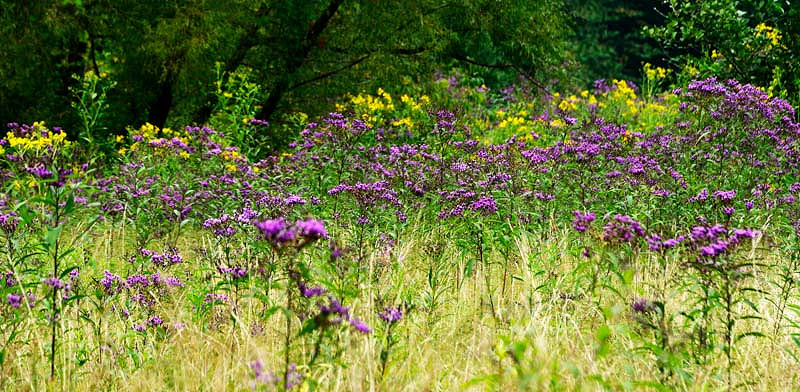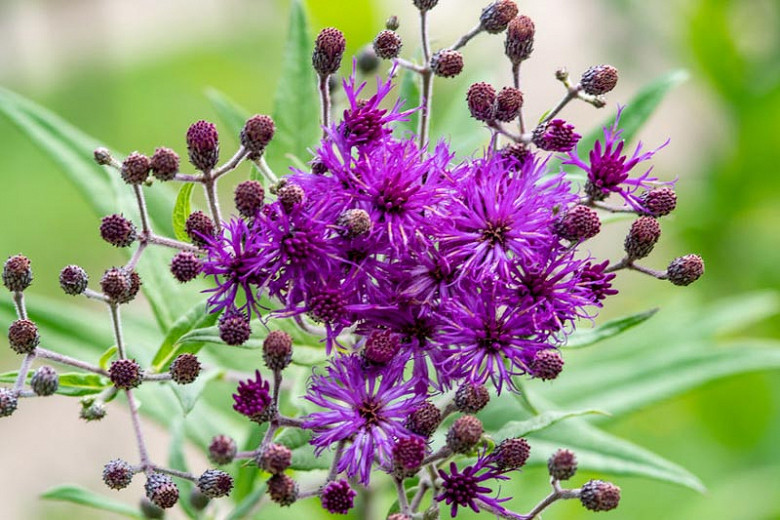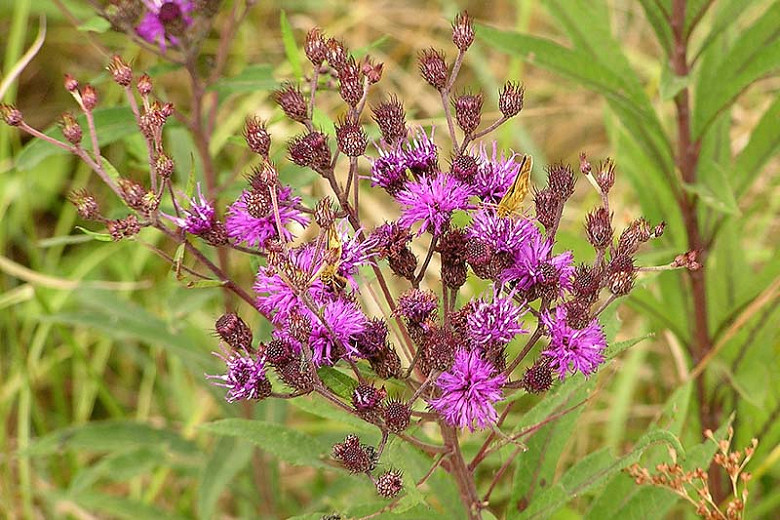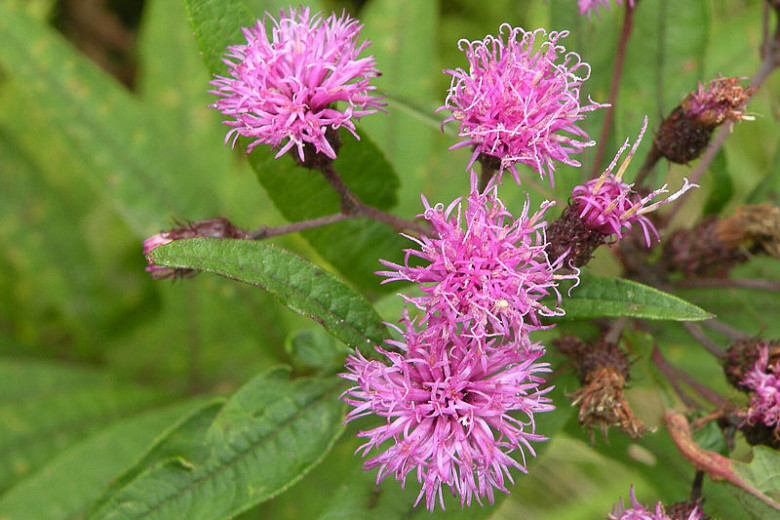Vernonia baldwinii (Western Ironweed)
Vernonia baldwinii (Western Ironweed) is a tall perennial boasting flattened clusters of tiny, fluffy, vivid purple disks in mid-summer to late fall. Each glorious flower head may consist of up to 15-35 disk florets and the inflorescence may be as wide as 12 in. (30 cm). Attractive to bees, butterflies, and skippers, the blossoms are borne atop stout, upright, hairy stems clad with long, lance-shaped, deep green leaves, 7 in. long (17 cm), slightly serrated along the margins. The blossoms give way to fluffy, rusty seed clusters that are dispersed by the wind. Western Ironweed occurs in dry prairies, hill prairies, glades, openings in upland forests, thinly wooded rocky slopes, pastures, or abandoned fields of central North America. The root system produces rhizomes, which travel in all directions and form colonies. Western Ironweed is probably best suited for a naturalistic garden or natural area. Attractive when in bloom, Western Ironweed is one of the best attractors of late summer butterflies.
- Grows up to 3-5 ft. tall (90-150 cm) and 12-18 in. wide (30-45 cm).
- Performs best in full sun in average, dry to moist, well-drained soils.
- Excellent choice for the back of borders, cottage gardens, wildflower gardens, prairies, and meadows.
- No serious pest or disease issues. Deer resistant.
- Deadhead regularly to prolong flowering and avoid unwanted self-seeding.
- Cut back stems in late spring to reduce plant height if desired.
- Propagate by seed (few seeds are fertile), by root division, and softwood tip cuttings.
- Native to central and southern United States.
Requirements
| Hardiness | 5 – 9 |
|---|---|
| Plant Type | Perennials |
| Plant Family | Vernonia – Ironweeds |
| Exposure | Full Sun |
| Season of Interest | Summer (Mid,Late)Fall |
| Height | 3' – 5' (90cm – 150cm) |
| Spread | 1' – 2' (30cm – 60cm) |
| Spacing | 12″ – 18″ (30cm – 45cm) |
| Water Needs | Low, Average |
| Maintenance | Low |
| Soil Type | Clay, Loam, Sand |
| Soil pH | Acid, Alkaline, Neutral |
| Soil Drainage | Moist but Well-Drained, Well-Drained |
| Characteristics | Showy |
| Native Plants | United States, Midwest, Illinois, Iowa, Kansas, Minnesota, Missouri, Nebraska, South Dakota, Colorado, Southeast, Arkansas, Louisiana, Southwest, New Mexico, Oklahoma, Texas |
| Tolerance | Deer, Drought, Dry Soil, Rocky Soil, Wet Soil |
| Attracts | Bees, Birds, Butterflies |
| Garden Uses | Beds and Borders |
| Garden Styles | Informal and Cottage, Prairie and Meadow |





